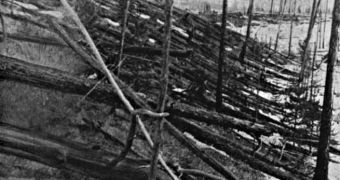Astronomers now believe that the world should be more concerned about small asteroids than larger space rocks. The potential for destruction these so-called airbursters have is staggering.
Hollywood and years of scientific consensus on the issue have made the public aware of the fact that large, Armageddon-style space boulders can destroy all life on Earth.
While that is indeed true, the possibility of that happening without us detecting the impending threat is fairly remote, scientists believe.
Far more likely, they now say, is Earth being impacted by smaller space rocks, called airbursters. They are a lot more difficult to detect, and can cause massive damage in the areas where they strike.
The Tunguska explosion is a good example of that. An airburster asteroid is believed to have exploded above an area of Siberian forest, destroying over 80 million trees.
The damaged area covered more than 2,150 square kilometers (830 square miles), and researchers estimate that the power of the blast reached 50 kilotons.
The space rock that caused this tremendous devastation is believed to have exploded some 5 to 10 kilometers above the surface of the planet, Space reports.
Events such as this one are not rare by far. In fact, they happen commonly, astronomers say. An airburster enters the atmosphere with little advanced warning about 2 to 12 years, on average.
“We used to think that the only real threat was from impacts that hit the ground […] and that the atmosphere would protect us from the small ones,” explains physicist Mark Boslough.
“We never really thought about the physics of airbursts. […] There hasn't been that much research,” adds the expert, who is based at the Sandia National Laboratories, in Albuquerque, New Mexico.
The announcements were made recently in California, at the American Institute of Aeronautics and Astronautics-funded Space 2010 conference.
“So yes, you do have to sweat the small stuff,” Boslough adds, quoted by Space. On October 8, 2009, a bolide some 10 meters in diameter exploded above Bone, Indonesia, with the power of 50 kilotons.
“Just statistically, it's almost certain that the next destructive impact will be an airburst. If big dollars are to be spent, I think they should be spent on more telescopes,” Boslough concludes.

 14 DAY TRIAL //
14 DAY TRIAL //